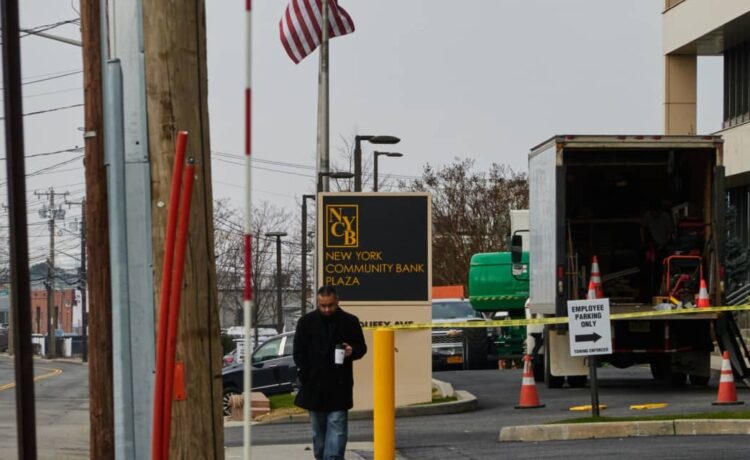Investors continued to crowd out the door of
on Tuesday. The stock was down 18% to $4.44, by early afternoon on torrential volume of 79 million shares—over five times an average day’s turnover, in just a few hours.
Since
surprised the market a week ago, with a dividend cut and half billion dollar increase in loan-loss reserves, its stock has lost 57%. Bank stocks large and small have shuddered in the small bank’s polar vortex. The
exchange-traded fund is down 11% in the week since NYCB’s jolt, to $46.85.
America’s small banks may be community pillars, but the long-term chart of that regional banking ETF shows that they have been poor friends to investors. The ETF is basically flat since 2006, notes Nicholas Colas at DataTrek Research, in a Tuesday note.
The dividend payout of the ETF’s regional banks has barely budged over the same period, he notes. It was an annual $1.44 a share in 2006. In 2023, it was $1.57.
That 9% growth in dividend payout, over a decade and a half, is pretty terrible, writes Colas. Especially when compared with the better-than 160% rise in the
S&P 500’s
dividend payout, or the 200% increase from
in the same stretch.
Advertisement – Scroll to Continue
Even after the slide in the regional bank ETF, its dividend yield is barely 3% now. You can get 4% on a 10-year Treasury, without worrying about the risk of another NYCB.
The widely prescribed tonic for America’s fragmented banking business is consolidation. Mergers were few, last year, as high interest rates and the chill of failures such as Silicon Valley Bank combined to shrink the stocks that consolidators would use as acquisition currency.
As Seaport Research Partners analyst Laurie Hunsicker looks at merger prospects for 2024, she sees a glimmer of hope. Last year’s high interest rates forced many banks to mark down the value of their securities holdings—disastrously, in the case of Silicon Valley.
Advertisement – Scroll to Continue
If the Federal Reserve finally starts to trim rates in this year’s second half, banks could see their book values rise, Hunsicker notes. That, in turn, should lift regional-bank share prices—and supply a catalyst that gets deal activity going again.
Write to Bill Alpert at [email protected]





